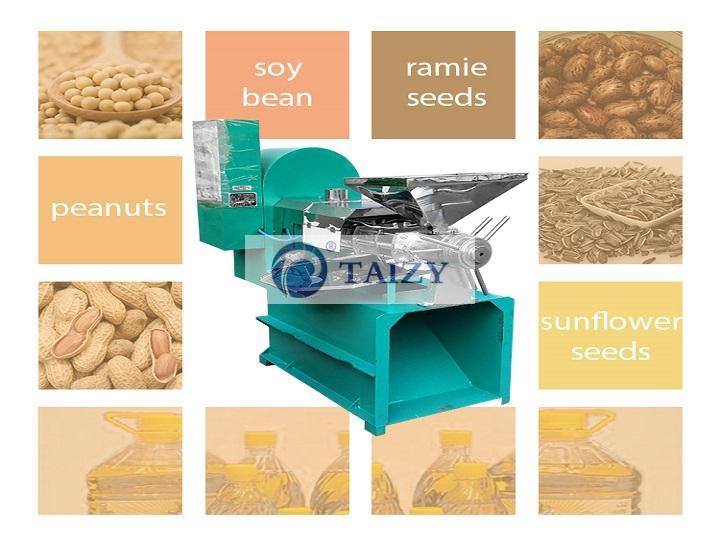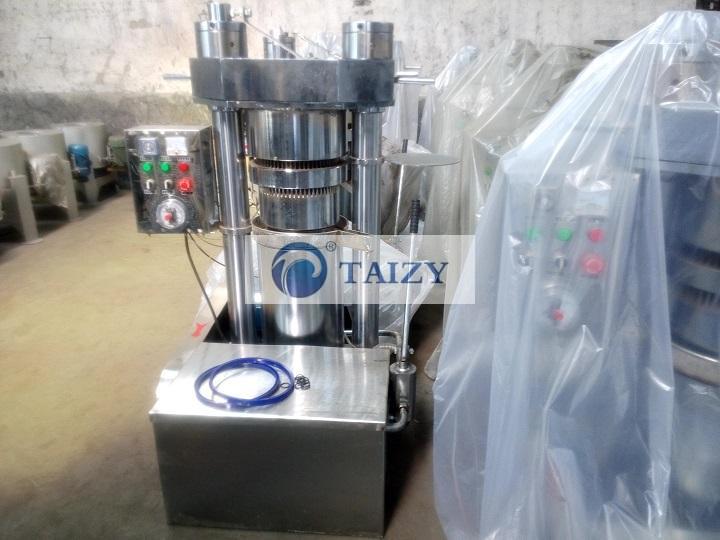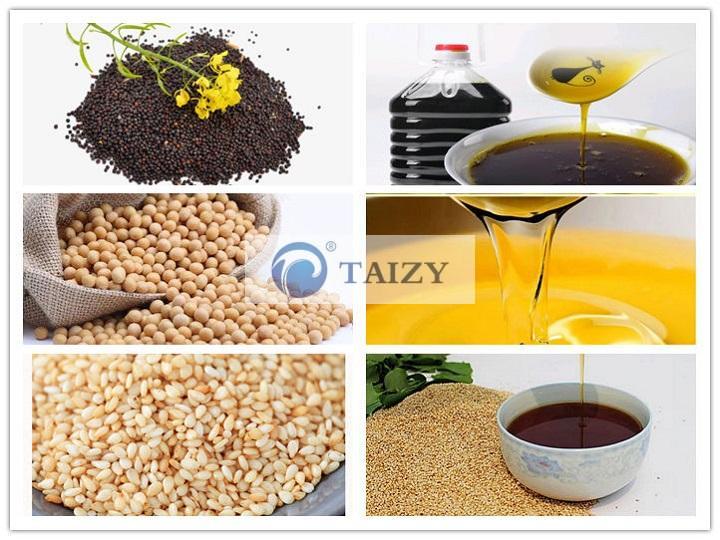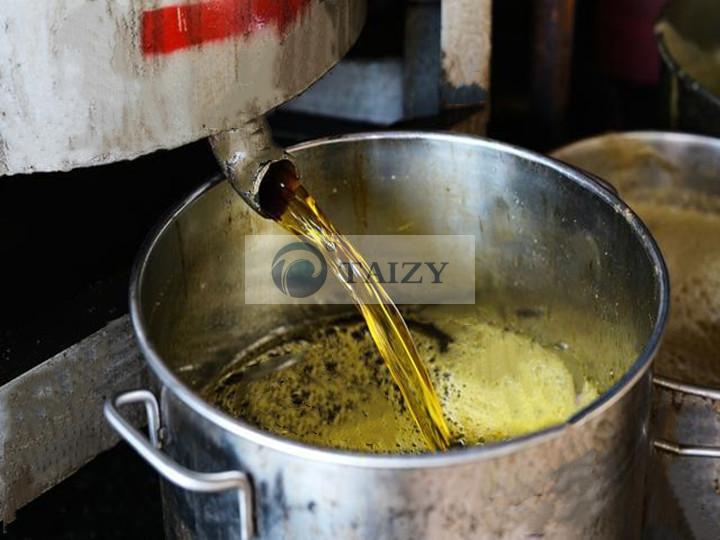Here we mainly talk something about two types of oil presses: screw oil press and hydraulic oil press.

Application-of-screw-oil-expeller 
hydraulic-oil-mill
Screw Oil Expeller
Maintenance of screw oil expeller
1. Check the situation of the cake outlet frequently during work. If the cake is not smooth or stop the cake, stop feeding, remove the material in the inlet, and slowly withdraw from the spindle to clear the blockage.
2. Continuously remove the leakage to prevent the oil circuit from being blocked. The recovered oil residue can be returned to the hopper to continue squeezing.
3. When the oil press fails and the screw shaft is stuck, stop immediately, insert the material inserting plate, open the discharge plate, and immediately reverse the screw shaft to withdraw the screw shaft.
4. Use grease and lubricating oil to lubricate all parts regularly.
Common faults and troubleshooting methods of screw oil press
- There is an abnormal scream. The reasons may be as follows: some metal stones enter the machine, the fasteners are loose, or poor lubrication.The corresponding elimination method is to stop and clean up immediately, tighten the screws at various parts and add lubricating oil in time.
2. The oil output rate is unstable. The reason may be the dry humidity of crops is not suitable for oil extraction or the machine’s temperature or material temperature is too low. The elimination method is to adjust the crops’ moisture and increase the temperature of the machine or the material.
3. The oil is turbid. The reasons are as follows: oil crops are too dry or machines with low body temperature. The solution is to adjust the oil crops’ moisture and increase the machine temperature.
4. Oil is stored in the feed port. The first reason is that the gap between the slivers is small and the oil content is high. The second is the blockage of the sliver gap. The elimination method is to properly increase the oil output gap and clean the press chamber.

different-kind-of-oil 
oil
Hydraulic oil press
Maintenance
1. Make the machine maintain clean all the time. Before and during the press, notice the cleanliness of the surface of the piston, and clean the dirt and oil on the surface of the piston in time. Always check whether the hydraulic oil in the oil tank is clean, and filter it carefully when filling the oil tank. After using for a period of time, if the oil is dirty, discharge and filter it in time, or replace it with new oil.
2. Maintain reasonable pressure. When using the oil pump to pressurize, it should not be too fast or too violent to prevent the hydraulic parts from being damaged by the impact of the oil. When reducing the pressure, open the oil return valve firstly. If the oil in the cylinder returns to the tank, open the valve slowly to avoid a sudden drop in pressure.
3. Do maintenance without delay. When the hydraulic oil press is in operation, you should always pay attention to the operating conditions of the machine, give frequent inspections to vulnerable parts, repair and replace them in time. Tighten loose nuts, and regularly check and repair the machine. When the hydraulic press is out of use, wipe the machine cleanly, grease on the rust-prone parts, and wrap with greased paper or kraft paper to prevent rust.
Common faults and troubleshooting methods
1. The oil pump does not suck oil. If the dirt blocks the oil filter during maintenance, remove the oil filter and clean it. After using the oil for a long time, the valve does not fit tightly due to deposits attached to the fuel inlet valve. Replace with new oil or drain the old oil to filter and clean the fuel inlet valve.
2. Insufficient oil pump pressure. During maintenance, if the valve is dirty or has a poor seal, disassemble and wash it to make it tight. If the screw plug of the oil inlet valve of the oil press is in poor contact with the valve seat, it can also be disassembled and washed to be ground to make it tight.
3. Oil leakage in the cylinder and piston. If it is caused by the wrong installation of the mouth of the cup, the cup should be reinstalled according to the correct method. If the leather bowl is broken and damaged, replace it with a new one.
4. Safety valve failure During maintenance, if there is dirt in the oil that causes the steel ball valve to leak, clean the safety valve, remove the dirt, and close the steel ball valve. If the spring loses its elasticity and cannot withstand high pressure, it should be replaced with a new spring.
